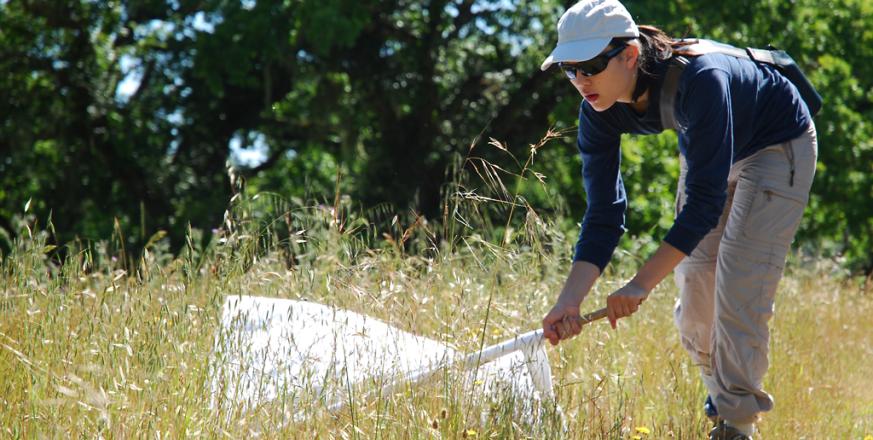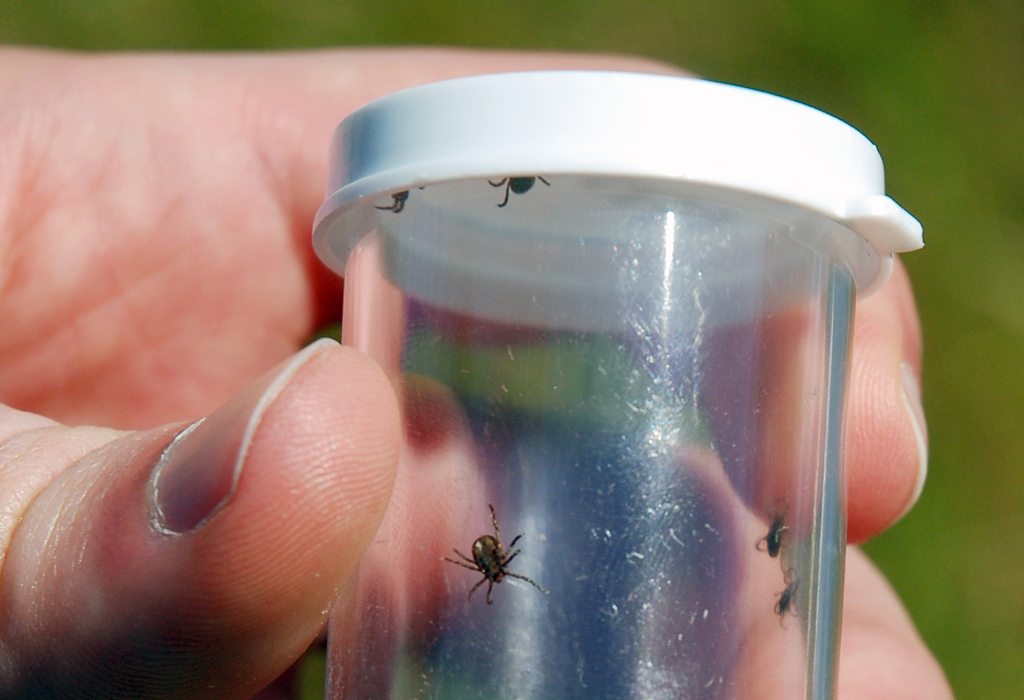Tick sampling and analysis for Lyme disease surveillance and risk reduction

Summary
In California, Lyme disease is transmitted to humans by the bite of Western black-legged ticks (Ixodes pacificus) infected with the bacterium Borrelia burgdorferi. Several factors make Lyme disease a challenge for visitors to natural areas where the tick and bacterium are found. Ticks can be difficult to avoid and difficult to detect, especially as nymphs. The disease itself can be difficult to diagnose and can be associated with a half dozen co-infections that are also transmitted by ticks. If it escapes early diagnosis, Lyme disease can be difficult to treat and can lead to severe health impacts. In the Bay area, awareness of Lyme disease is surprisingly low, heightening the risk of Lyme for users of the region's extensive natural areas and trails.
This study, which grew out of a Stanford course in conservation medicine taught by Dan Salkeld, is assessing the risk of Lyme disease at Jasper Ridge and in the neighboring towns of Portola Valley and Woodside. The study involves a community-based Lyme surveillance program aimed at reducing the risk of Lyme disease. Stanford students are participating in a variety of ways, including a one-quarter course that is ironing out the tick sampling protocols that community volunteers will follow. The main technique for sampling ticks is to sweep a white flannel flag across the vegetation canopy or understory. Once collected, the ticks will be tested by Nathan Nieto (University of Nevada) and Charles Chiu (UCSF) for both the Lyme agent and co-infections.
For this study Stanford Professor Eric Lambin is using a GIS (geographic information system) to design a tick sampling scheme that factors in many variables so that the results of the Lyme survey will lead to general conclusions about how the risk of Lyme disease varies across local landscapes.
Several studies are also underway at the Stanford Medical Center to improve the diagnosis and treatment of Lyme disease.




